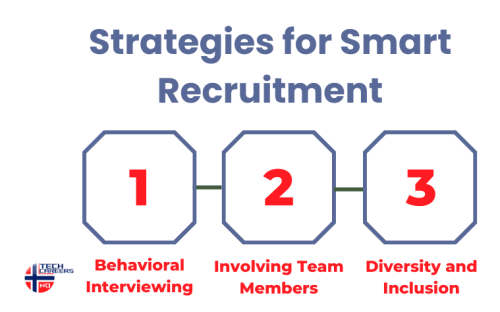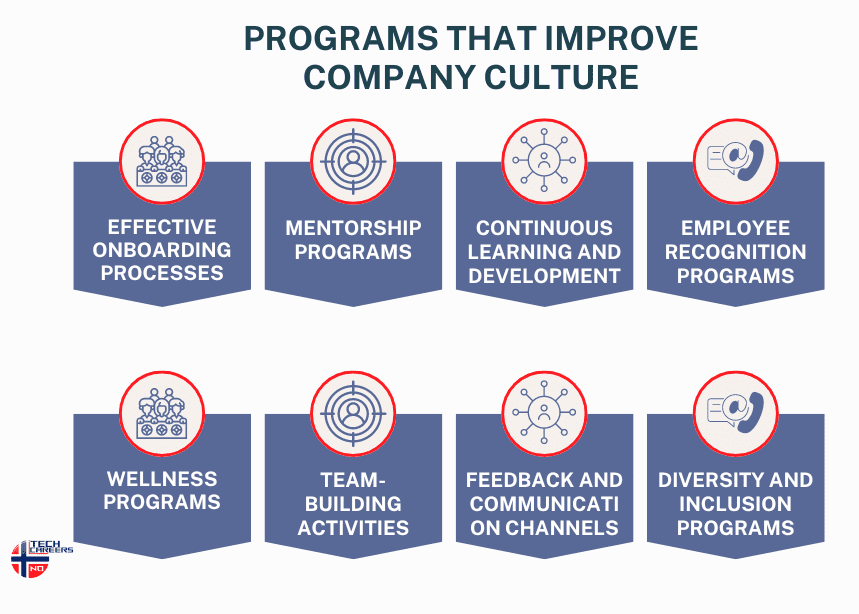
A strong, positive company culture is crucial for several reasons. First, it helps attract and retain top talent. Employees are more likely to stay with a company where they feel valued, respected, and aligned with the organization’s values. Second, a positive culture boosts employee morale and productivity. When employees feel connected to their workplace, they are more motivated and engaged in their tasks.
Conversely, a toxic company culture can have detrimental effects. Toxic company culture is characterized by negative behaviors such as poor communication, lack of transparency, and unprofessional conduct. This type of environment leads to high turnover rates, low employee engagement, and reduced productivity. It can also damage the company’s reputation, making it harder to attract quality candidates and retain existing employees.
In summary, company culture is a vital component of an organization’s success. By fostering a positive culture and avoiding toxicity through smart recruitment practices, companies can create a healthy, productive, and sustainable work environment.
Understanding Toxic Work Culture
Common Signs of Toxic Work Culture
Identifying the signs of a toxic work culture is the first step towards building a positive company culture. Here are some common indicators:
- High Turnover Rates A consistent pattern of employees leaving the company can be a strong indicator of a toxic work environment. High turnover often signifies dissatisfaction among employees, stemming from issues such as poor management, lack of growth opportunities, or a negative atmosphere.
- Low Employee Engagement When employees are disengaged, it typically reflects a deeper issue within the company culture. Disengaged employees may appear indifferent, lack enthusiasm, and be less productive. This disengagement can stem from feeling undervalued, overworked, or unsupported.
- Poor Communication Ineffective or infrequent communication can lead to misunderstandings, confusion, and frustration among employees. In a toxic work culture, there may be a lack of transparency, with important information being withheld or poorly communicated.
- Lack of Trust and Respect Trust and respect are foundational to a healthy work environment. In a toxic culture, there may be prevalent gossip, favoritism, and a general lack of mutual respect among employees and between employees and management. This can create a hostile and unproductive atmosphere.
- Unclear Expectations When job roles and expectations are not clearly defined, employees can feel lost and unsure about their responsibilities. This can lead to frustration, decreased productivity, and a sense of being undervalued.
- Resistance to Change A toxic work environment often shows a strong resistance to change and innovation. Employees may feel their ideas are not heard or valued, leading to stagnation and a lack of progress within the company.
- High Levels of Stress and Burnout Overworking employees without providing adequate support or recognizing their efforts can lead to high levels of stress and burnout. This not only affects the well-being of the employees but also reduces overall productivity and morale.

In industries like Norway IT jobs market, where competition for top talent is fierce, recognizing and addressing these signs is crucial. Building company culture that promotes well-being, engagement, and respect can help attract and retain the best professionals. By proactively identifying and mitigating these toxic traits, companies can create a more positive and productive work.
The Role of Recruitment in Building Company Culture
Recruitment is the cornerstone of transforming company culture. The individuals brought into an organization significantly influence its environment, values, and overall dynamics. For IT companies in Norway, where the industry is rapidly evolving and the demand for skilled professionals is high, smart recruitment practices are essential. By carefully selecting candidates who align with the company’s values and culture, organizations can lay a strong foundation for a positive and productive work environment.
Aligning with Core Values
One of the most critical aspects of recruitment is ensuring that new hires align with the company’s core values. This alignment goes beyond matching technical skills and qualifications; it involves finding candidates who resonate with the company’s mission, vision, and ethical standards. For example, if a tech company in Norway prioritizes innovation and collaboration, it should seek individuals who are not only technically proficient but also passionate about driving technological advancements and working effectively in teams.
Cultural Fit vs. Cultural Add
While hiring for cultural fit has been a common practice, it is equally important to consider cultural add. Cultural fit focuses on selecting candidates who align with the existing culture, ensuring they blend seamlessly into the current environment. However, this approach can sometimes lead to homogeneity and stifle diversity. On the other hand, hiring for cultural add means looking for candidates who bring unique perspectives and experiences that can enhance and transform the existing company culture. This approach fosters innovation, creativity, and a more inclusive work environment.
Strategies for Smart Recruitment
Crafting clear and honest job descriptions is crucial for attracting candidates who are a good cultural fit. These descriptions should accurately reflect the company’s values, culture, and expectations. This transparency helps potential candidates understand if they would thrive in the given environment. Job boards in Norway can be an excellent platform to showcase these detailed job descriptions, reaching a broad audience of qualified candidates.
Behavioral Interviewing
Behavioral interview techniques are effective in assessing how candidates have handled situations in the past and how they might behave in the future. By asking questions that reveal candidates’ problem-solving abilities, teamwork, and ethical decision-making, recruiters can gauge their compatibility with the company’s culture. Understanding why company culture is important can help tailor these questions to ensure they align with the desired cultural attributes of the organization.
Involving Team Members
Including team members in the interview process provides a broader perspective on the candidate’s potential cultural fit. This collaborative approach ensures that the candidate is evaluated not just by HR but by those who will work closely with them, fostering a sense of collective responsibility in maintaining and enhancing the company culture. This strategy is particularly beneficial in small to medium-sized IT companies in Norway, where team dynamics are crucial for success.
Diversity and Inclusion
Promoting diversity and inclusion in recruitment is vital for transforming company culture. A diverse workforce brings varied viewpoints and experiences, leading to richer discussions and more innovative solutions. IT companies in Norway should strive to build teams that reflect different backgrounds, cultures, and ideas, creating a more dynamic and adaptable work environment. Utilizing Norwegian job websites that emphasize diversity and inclusion can help attract a wide range of candidates.

By focusing on these strategies, companies can ensure that their recruitment practices contribute to a positive and thriving company culture. Understanding why is company culture important helps frame these efforts, emphasizing the long-term benefits of a cohesive, motivated, and diverse workforce. For IT companies in Norway, adopting a strategic and thoughtful approach to recruitment can make a significant difference in building a resilient and vibrant workplace.
How to Improve Company Culture
Programs That Improve Company Culture
Effective Onboarding Processes
- Structured Orientation Sessions: Develop comprehensive orientation sessions that include company history, mission, values, and an overview of organizational structure.
- Buddy System: Pair new hires with experienced employees to provide guidance and support during the initial weeks.
- 30-60-90 Day Plans: Create clear milestones for new employees to achieve in their first 30, 60, and 90 days to ensure they are integrating well and understanding their roles.
Mentorship Programs
- Formal Mentorship Assignments: Match new or junior employees with senior staff for regular one-on-one mentorship meetings.
- Mentorship Training: Provide training for mentors to ensure they have the skills to effectively support and guide their mentees.
- Mentorship Goals: Establish specific goals and outcomes for the mentorship relationship to track progress and success.
Continuous Learning and Development
- Professional Development Budgets: Allocate funds for employees to attend workshops, conferences, and courses relevant to their roles.
- Internal Training Programs: Develop internal training sessions on both soft and technical skills, led by experienced staff or external experts.
- Learning Management System (LMS): Implement an LMS to provide access to a wide range of online courses and resources.
Employee Recognition Programs
- Monthly/Quarterly Awards: Implement a system for recognizing outstanding employees on a monthly or quarterly basis, with awards and public acknowledgment.
- Spot Bonuses: Offer immediate bonuses for exceptional work or contributions to projects.
- Peer Recognition: Create a platform where employees can recognize and appreciate their colleagues’ efforts and achievements.
Wellness Programs
- Fitness Incentives: Provide gym memberships, fitness class reimbursements, or on-site fitness facilities.
- Mental Health Support: Offer access to counseling services, stress management workshops, and mental health days.
- Flexible Work Arrangements: Allow for flexible hours or remote work options to help employees balance their personal and professional lives.
Team-Building Activities
- Quarterly Off-Site Retreats: Organize off-site retreats focused on team-building exercises and strategic planning.
- Regular Team Lunches/Outings: Schedule regular informal gatherings, such as team lunches or after-work outings, to build camaraderie.
- Collaborative Projects: Encourage cross-departmental projects that require teamwork and cooperation.
Feedback and Communication Channels
- Regular Surveys: Conduct anonymous employee surveys quarterly to gather feedback on various aspects of the workplace and culture.
- Suggestion Boxes: Implement digital or physical suggestion boxes for continuous employee feedback.
- Open-Door Policy: Encourage an open-door policy where employees can freely discuss their concerns and ideas with management.
Diversity and Inclusion Programs
- Diversity Training: Provide regular training sessions on diversity, equity, and inclusion topics.
- Employee Resource Groups (ERGs): Support the formation of ERGs for different demographics and interests within the company.
- Inclusive Hiring Practices: Implement recruitment practices that ensure a diverse pool of candidates and mitigate bias.
Implementing these practical programs can help transform company culture, making it more positive, inclusive, and engaging. For IT companies in Norway, leveraging job sites in Norway to promote these programs can also attract top talent who are looking for supportive and dynamic workplaces.

Examples of Good Company Culture
Google is often cited as a prime example of excellent company culture. Known for its innovative and employee-centric environment, Google focuses on creating a workplace where employees feel valued and inspired. The company’s culture is built around three key words: Innovative, Inclusive, and Collaborative.
- Innovative: Google encourages creativity and experimentation. Employees are given the freedom to explore new ideas and are supported with resources to bring those ideas to life.
- Inclusive: Diversity and inclusion are core to Google’s values. The company promotes a welcoming environment for all, providing numerous employee resource groups and diversity initiatives.
- Collaborative: Teamwork is emphasized at Google, with open workspaces and tools that facilitate collaboration. The company fosters a sense of community and shared purpose among its employees.
Salesforce
Salesforce is another example of a company with a strong, positive culture. The company emphasizes its commitment to equality, customer success, innovation, and sustainability. The culture at Salesforce can be described with these three words: Empowering, Ethical, and Customer-Centric.
- Empowering: Salesforce invests heavily in employee development and well-being, offering extensive training programs and wellness initiatives.
- Ethical: The company prides itself on its ethical practices, including its commitment to giving back through its 1-1-1 model, where 1% of the company’s equity, 1% of employee time, and 1% of product are donated to charitable causes.
- Customer-Centric: Customer success is at the heart of Salesforce’s culture. The company continuously seeks to innovate and improve its products based on customer feedback and needs.
Netflix
Netflix’s culture is built around freedom and responsibility, encouraging employees to take initiative and make decisions. This approach is encapsulated in three words: Innovative, Transparent, and Autonomous.
- Innovative: Netflix values creativity and is willing to take risks to push the boundaries of what’s possible in entertainment.
- Transparent: The company practices radical transparency, where information is openly shared across all levels, fostering trust and clarity.
- Autonomous: Employees at Netflix are given a high degree of autonomy, empowering them to take ownership of their work and drive the company forward.
Zappos
Zappos is renowned for its customer service and unique company culture. The culture at Zappos can be described by these three words: Fun, Service-Oriented, and Family-Like.
- Fun: Zappos fosters a fun and quirky work environment, encouraging employees to express their personalities and enjoy their work.
- Service-Oriented: Exceptional customer service is a cornerstone of Zappos’ culture, with employees going above and beyond to ensure customer satisfaction.
- Family-Like: The company promotes a close-knit, supportive atmosphere, treating employees and customers like family.
Patagonia
Patagonia’s culture is deeply rooted in its commitment to environmental and social responsibility. The culture can be summarized with these three words: Sustainable, Mission-Driven, and Passionate.
- Sustainable: Patagonia is dedicated to environmental sustainability, integrating eco-friendly practices into all aspects of its business.
- Mission-Driven: The company’s mission to save the planet drives its corporate strategy and employee initiatives.
- Passionate: Employees at Patagonia are passionate about the environment and their work, creating a highly motivated and engaged workforce.
In summary, good company culture is characterized by attributes that align with the organization’s values and mission. When asked, “what 3 words describe the culture of a company?” the answers can reveal much about the environment and priorities of that organization. Whether it’s innovation, inclusivity, empowerment, transparency, or sustainability, these examples demonstrate how companies can cultivate a positive culture that not only attracts top talent but also drives success and satisfaction. For IT companies in Norway, adopting similar principles and practices can help build a thriving and resilient work culture.
Ready to Transform Your Company Culture and Avoid Toxicity?
Start by implementing smart recruitment practices and practical programs that foster a positive, inclusive work environment. Discover how to attract top talent, boost employee morale, and drive success. Visit our website to learn more and access valuable resources for building a thriving workplace culture today!


 Previous Post
Previous Post Next Post
Next Post